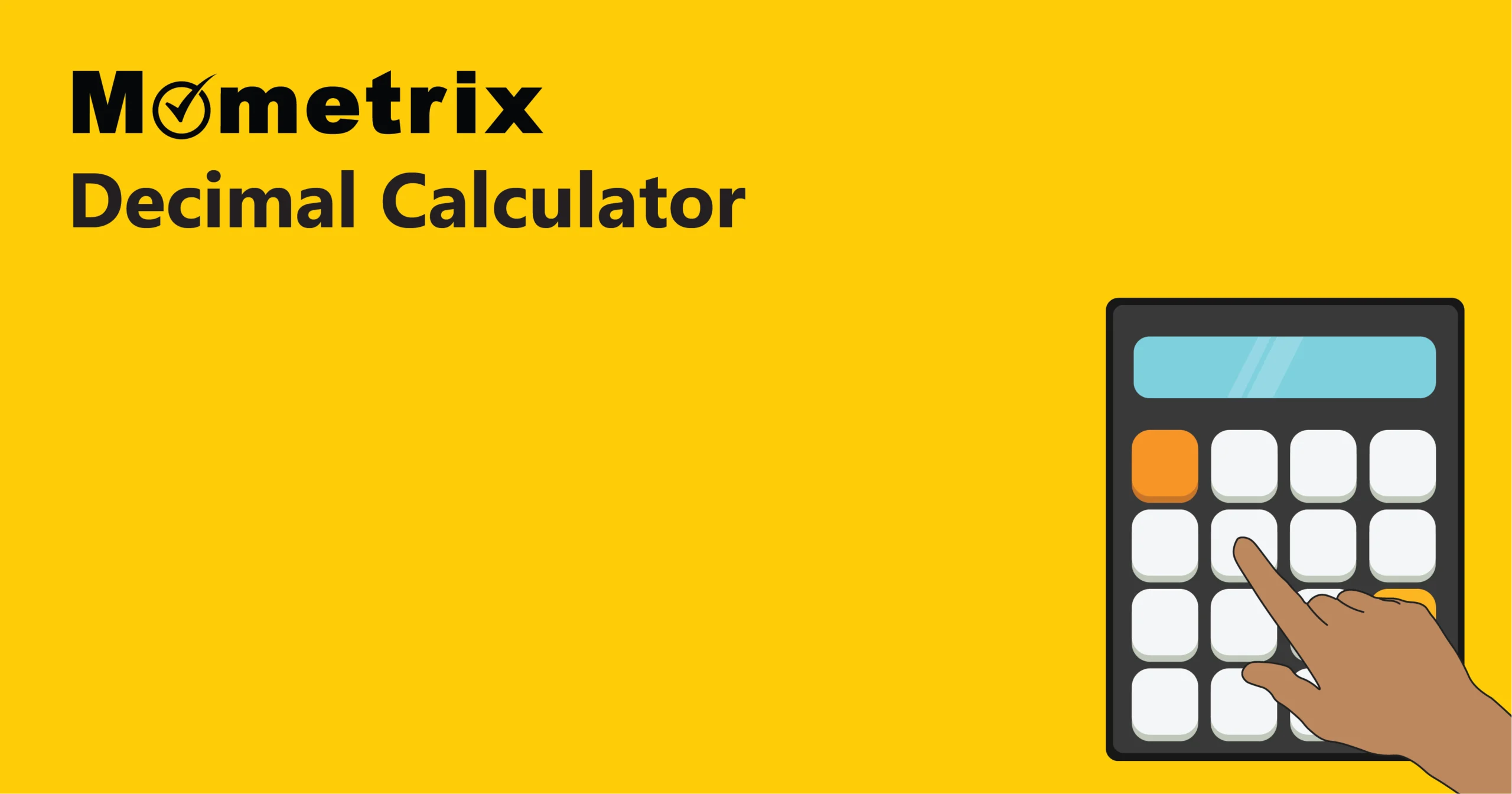Use this calculator to perform an operation on any two decimal numbers. Select from the dropdown menu to add, subtract, multiply, divide, or even more.
Adding Decimals
To add decimals, you line up the decimal points and add the numbers as you normally would. Go from right to left, column by column.
For \(5.8 + 2.35\), let’s first line up the decimal points. If a number doesn’t have as many decimal places as the other, you can add one or more zeroes to the end.
Now, we just add the columns, starting from the right. Be sure to carry over when necessary.
Therefore, \(5.8+2.35=8.15\)!
Subtracting Decimals
Subtracting decimals works just like adding. You line up the decimal points and subtract as you would with whole numbers.
For \(9.5 – 3.25\), let’s first line up the decimal points. Remember, we can add trailing zeroes to make the numbers the same length after the decimal point.
Then, subtract the columns, borrowing from the next column as you go if needed.
Therefore, \(9.5 – 3.25=6.25\)!
Multiplying Decimals
To multiply decimals, you first have to multiply the numbers as if they were whole numbers. Then, you can place the decimal point in the answer as needed.
For \(2.5 \times 1.5\), let’s first multiply the numbers with the decimal points removed.
\(25\times 15=375\)
Then, add up the total number of decimal places in the original numbers. Our original numbers, 2.5 and 1.5, each have one decimal place, so we have two decimal places total.
This means we need to place the decimal point in our product (375) two places to the left.
Therefore, \(2.5 \times 1.5=3.75\)!
Dividing Decimals
To divide decimals, you want to make the divisor a whole number.
To do this for \(6.75 \div 1.5\), let’s move the decimal point in the divisor to the right until it becomes a whole number. In this case, move it one place to get the whole number 15.
Then, move the decimal point in the dividend the same number of places to the right. In this case, 6.75 becomes 67.5.
Next, divide the new numbers as you normally would.
Therefore, \(6.75 \div 1.5=4.5\)!
Decimals with Exponents
Here, we have a negative exponent. This means you should find the reciprocal of the base raised to the positive exponent. So, 2.5-2 is the same as \(1 \div 2.5^2\).
First, we need to calculate the exponent.
\(2.5^2=2.5\times 2.5\)
Then, remove the decimals and multiply.
\(25 \times 25=625\)
Next, add up the number of decimal places we had before removing them. We had two in this case, so place the decimal two places to the left to get 6.25.
Now, we need to find the reciprocal, which is \(1 \div 6.25\). To solve this, make the divisor and dividend whole numbers by moving the decimal two places to the right.
\(100 \div 625=0.16\)
Therefore, \(2.5^{-2} =0.16\)!
Decimals with Roots
Our example is a cube root. This means we’re looking for a number that, when multiplied by itself three times, equals the number under the root symbol.
In other words, we’re looking for a number \(x\) such that \(x\times x \times x=0.125\).
To start, think about whole numbers. Ignore the decimal and consider the whole number 125. We know that \(5 \times 5\times 5=125\).
With that in mind, our target of 0.125 has three decimal places. If we try \(x= 0.5\), then multiplying it three times will result in an answer with three decimal places.
\(0.5 \times 0.5 \times 0.5=0.125\)
That shows us that \(\sqrt[\Large{3}]{0.125}=0.5\)!
Decimals with Logarithms
For this example, the logarithm asks: “What exponent do I need to put on the base (5) to get the number 0.04?”
In other words, we’re trying to solve \(5^?=0.04\).
To start, convert the decimal 0.04 to a fraction and simplify it.
\(0.04 = \dfrac{4}{100}=\dfrac{1}{25}\)
So our equation \(5^?=0.04\) becomes \(5^?=\dfrac{1}{25}\).
Next, we need to express the fraction’s denominator using the base. We know that \(5^2=25\), so \(\dfrac{1}{25}\) is the same is \(\dfrac{1}{5^2}\).
This is where the rule of negative exponents comes in. Remember that \(\dfrac{1}{x^n}=x^{-n}\). So \(\dfrac{1}{5^2}\) is the same as 5-2.
Finally, we can solve for the exponent. Our equation is now \(5^?=5^{-2}\). Since the bases are the same, the exponents must be equal.
That shows us that \(\log_{5}(0.04)=-2\)!




